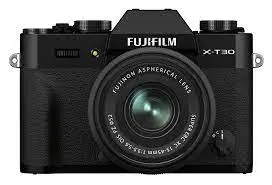How Much Do Digital Cameras Cost?
Digital cameras can cost as little as $450 and easily upwards of $9,000. And it’s absolutely true with cameras that you get what you pay for.
Compare on AmazonYou need to consider the type of pictures you want to take and the situations you expect to be in to determine your needs and your price point. The most basic digital cameras are “point and shoot”—simple and low on functions—which cost between $300 and $900. Mid-range digital cameras range from $800 to $3,500 (with lens), and professional cameras and lenses can climb many times higher. Point and shoots require no lens switching and minimal setup; higher-end cameras offer a variety of lenses, features, and settings to fine-tune photos for action, lighting levels, and more, and require more expertise.

Popular Digital Cameras and Costs:
Below are several of the more popular digital cameras, along with a description an estimated cost to purchase.
Canon EOS 5D Mark III 22.3 MP Full Frame CMOS Digital SLR Camera with EF 24-105mm f/4 L is USM Lens
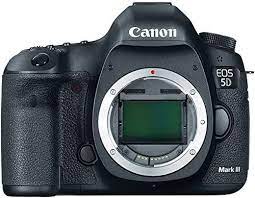
Estimated Cost: $2,400
Compare on AmazonCanon PowerShot G7 X Digital Camera – Wi-Fi Enabled
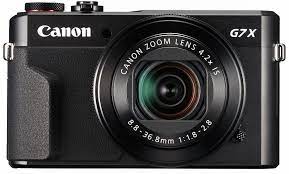
| Brand | Canon |
| Model Name | Canon PowerShot G7 X Mark II |
| Maximum Webcam Image Resolution | 20.2 MP |
| Photo Sensor Size | 1-inch |
| Image Stabilization | Optical |
| Max Shutter Speed | 1/2000 seconds |
Estimated Cost: $875
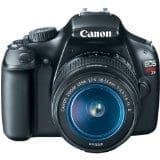
What to Look For in a Digital Camera:
When choosing a digital camera, various factors can influence your decision depending on your specific needs, preferences, and photography style. Here are some key aspects to consider:
1. Camera Type
- Point-and-Shoot: For casual shooters and beginners.
- DSLR: For serious hobbyists and professionals who want manual controls and interchangeable lenses.
- Mirrorless: For those who want a lighter camera with interchangeable lenses without compromising on image quality.
- Action Camera: For adventurers and vloggers who need a compact, durable, and often waterproof camera.
- Instant Camera: For fun, instant photo prints.
2. Image Quality
- Resolution: Measured in megapixels (MP), but more MP doesn’t always mean better quality.
- Sensor Size: Larger sensors generally provide better image quality, especially in low light.
3. Lens Quality and Flexibility
- Fixed vs. Interchangeable Lens: Decide whether you want a fixed lens or the flexibility of changing lenses.
- Zoom Range: Consider the optical zoom capabilities if you need to capture distant objects.
- Aperture: A wider maximum aperture (lower f-number) allows more light in and provides better low-light performance.
4. Ease of Use
- User Interface: Check if the menu and controls are intuitive for you.
- Ergonomics: Make sure the camera feels comfortable in your hand.
5. Video Capabilities
- Resolution: Look for Full HD (1080p) or 4K video capabilities.
- Frame Rate: Higher frame rates like 60fps or 120fps are useful for slow-motion playback.
- Autofocus: Continuous autofocus during video recording can be a crucial feature for vloggers.
6. Battery Life
Ensure that the camera has sufficient battery life for your shooting style and consider investing in spare batteries.
7. Storage and Connectivity
- Storage: Ensure it supports memory cards with enough storage for your needs.
- Connectivity: Look for Wi-Fi, Bluetooth, and/or NFC for easy sharing and transferring of photos and videos.
8. Durability
- Build Quality: Metal bodies are typically more durable than plastic.
- Weather Sealing: Consider weather-sealed bodies if you’ll be shooting in challenging conditions.
9. Additional Features
- Image Stabilization: To reduce the effects of camera shake.
- Burst Mode: For capturing fast-action scenes.
- ISO Range: To understand its capability in varied lighting conditions.
- Viewfinder: Some prefer an optical/electronic viewfinder for composing shots.
- LCD Screen: Check for size, resolution, and whether it’s articulating/touchscreen.
10. Price and Value for Money
Ensure that the camera provides good value for its price and fits within your budget.
11. Reviews and Recommendations
Read online reviews, watch comparison videos, and possibly try out the camera in a store before purchasing.
12. Accessories Availability
Ensure that essential accessories (like lenses for DSLR/mirrorless cameras) are available and within your budget.
Considering these aspects and evaluating them against your own requirements and budget will help you find a digital camera that best suits your needs. Remember that the “best” camera is subjective and largely depends on how you intend to use it.
Compare on AmazonMore Popular Digital Cameras and Costs:
Leica Q2 Digital Camera (19050)
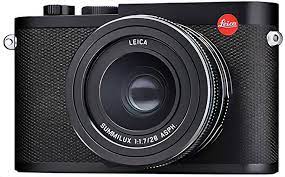
Estimated Cost: $1,200
What is a Digital Camera and How Much Does it Cost?
What is a Digital Camera?
A digital camera is a device that captures photographs and/or video in a digital format. Unlike traditional film cameras, digital cameras store images electronically in a memory card, which can then be transferred to a computer or other devices for viewing, editing, and sharing. Here are some key components of digital cameras:
- Image Sensor: Converts light into electronic signals.
- Lens: Focuses light onto the image sensor.
- LCD Screen: Allows users to preview and review photos.
- Memory Card: Stores images and videos digitally.
- Shutter Button: Used to capture the photograph.
- Battery: Provides power to the camera.
Digital cameras come in various types including:
- Point-and-Shoot: Compact and easy-to-use. Suitable for casual photographers.
- DSLR (Digital Single-Lens Reflex): Larger, with interchangeable lenses, and manual controls. Suited for professionals and enthusiasts.
- Mirrorless: Similar to DSLRs but without the mirror mechanism, typically smaller and lighter.
- Action Cameras: Compact and rugged, designed for capturing action and sports.
- Instant Cameras: Capture and print photos instantly on physical film, despite being digitally processed.
Cost of a Digital Camera
The cost of digital cameras can vary widely based on the type, brand, features, and technology. Here’s a general pricing guide:
- Point-and-Shoot Cameras:
- Budget: $100 – $300 USD
- Mid-range: $300 – $600 USD
- High-end: $600 – $1,200 USD
- DSLR Cameras:
- Entry-level: $400 – $700 USD
- Mid-range: $700 – $1,500 USD
- Professional: $1,500 – $6,000+ USD
- Mirrorless Cameras:
- Entry-level: $400 – $800 USD
- Mid-range: $800 – $2,000 USD
- High-end: $2,000 – $4,000+ USD
- Action Cameras:
- Budget: $100 – $300 USD
- High-end: $300 – $700 USD
- Instant Cameras:
- General: $50 – $200 USD
Note: Prices are indicative and can fluctuate based on various factors like sales, new model releases, and geographic region.
Additional Costs
Remember to consider additional costs like:
- Memory cards
- Camera bag
- Lenses (for interchangeable lens cameras)
- Tripod
- External flash
- Extended warranty or insurance
When purchasing a camera, consider your budget, photography needs, and desired features to choose a model that’s right for you. It might be useful to read reviews and compare models to ensure that you’re getting the best value for your money.
Compare on Amazon